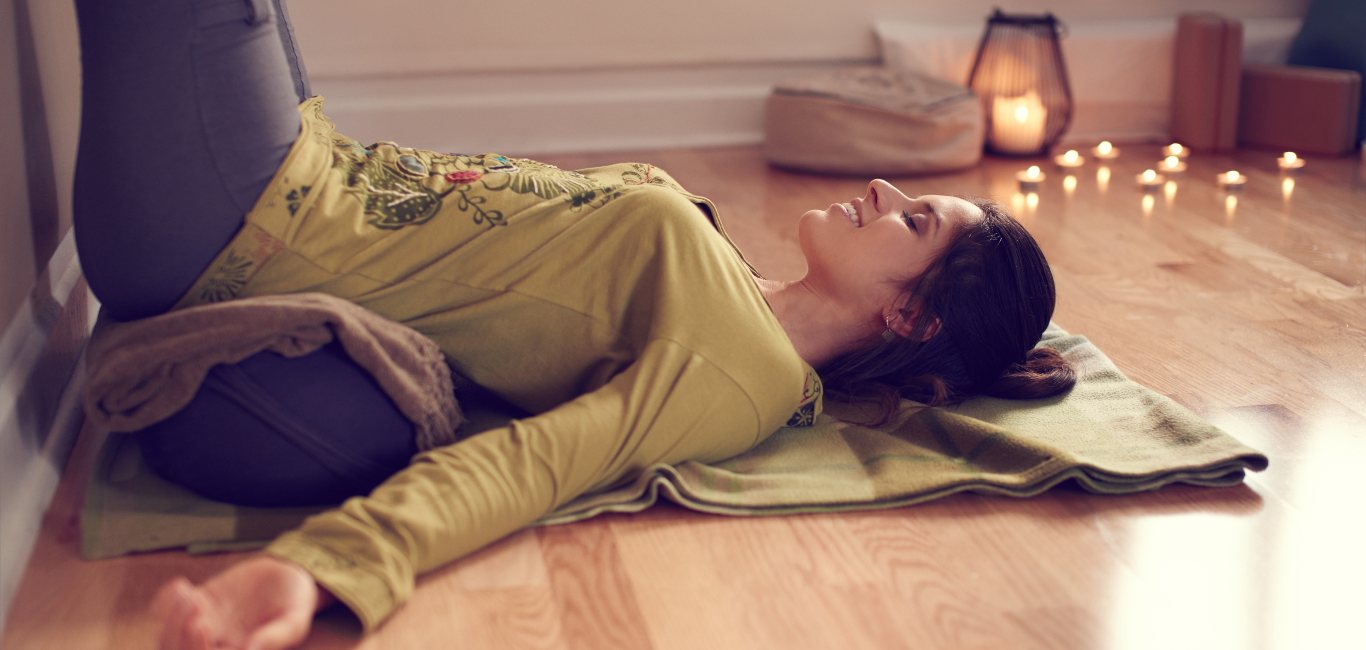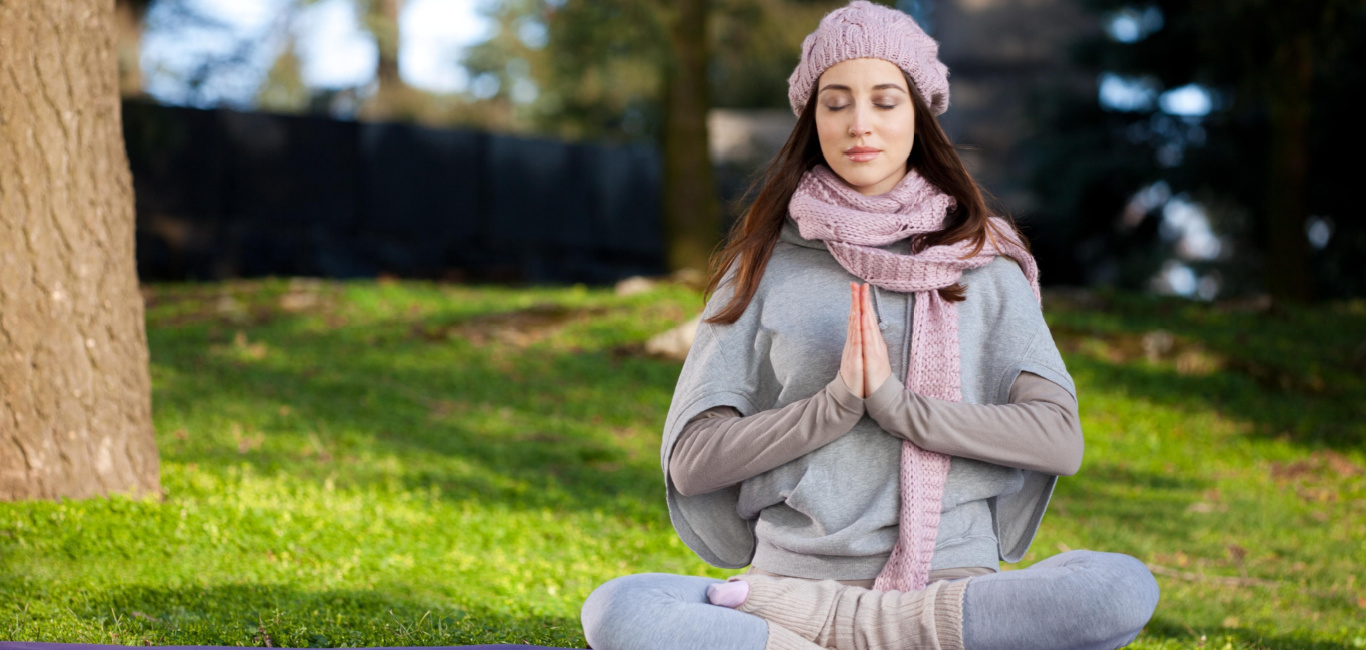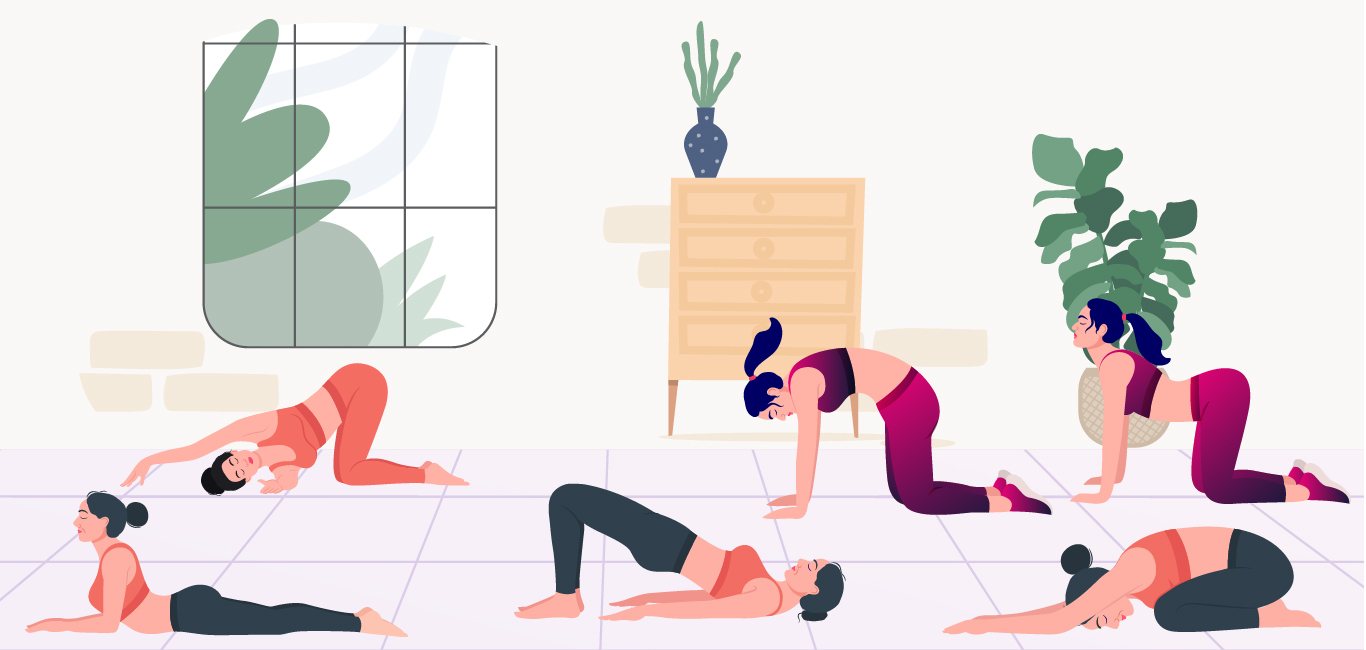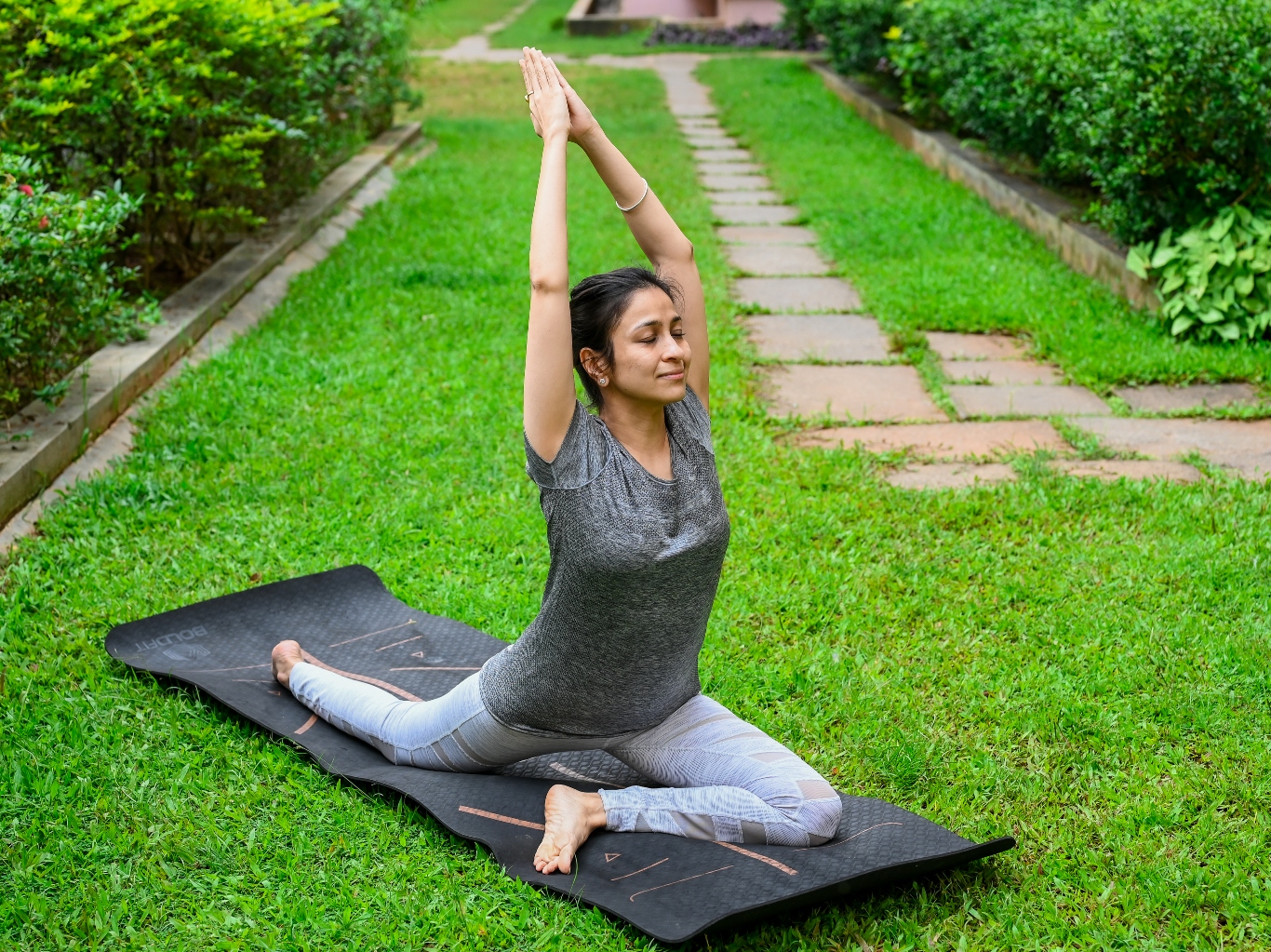
Shanthi Shree, postgraduate student from the Indian Institute of Technology, Mumbai, vouches for the benefits of restorative yoga “I practice restorative yoga daily, and it calms my mind. Over time, this routine has become a cherished habit, and I feel that it is a powerful act of self-care,” she told Happiest Health.
The 23-year-old emphasises the importance of mindful breathing during the practice. She moves slowly and mindfully through each pose, using props such as a bolster, blankets, pillows, and blocks to maintain and support each posture. “I generally use blankets and pillows for practice,” she says.
She says that she finds it beneficial to practice in the evening after her classes as it helps to let go of the worries of the day.
What is restorative yoga
It is a tranquil form of yoga that helps to relieve stress. This nourishing and calming practice promotes inner peace and balance, which can leave one feeling refreshed and rejuvenated. The restorative yoga practice triggers the “relaxation response” in the brain, which is a vital healing mechanism for the body.
Relaxation is an art
“Yoga always talks about the connection between body and mind and how to restore that balance. In restorative yoga, maintenance of posture (asana) for longer duration is the key principle,” says Mohanty, Yogamaster, MM Global Yoga Wellness, Bengaluru.
Restorative yoga tames the overactive sympathetic nerve
Mohanty explains that the human nervous system has sympathetic and parasympathetic nerves. When the sympathetic nervous system (which controls the flight or fight response) becomes overreactive, it causes stress and unease that leads to restlessness and anxiety. Practising restorative yoga not only stretches certain muscles, but also relaxes them, he adds.
Restorative yoga: tips for a beginner
Restorative yoga poses may seem simple, but they can prove to be difficult for a beginner. Mohanty suggests, “patience and perseverance is the key to practising this form of yoga.”
He adds that the process should involve understanding one’s body and experiencing the journey as every muscle relaxes with each breath. The goal is not merely to focus on the stretch but relax as well.
Start with simple postures
“In any form of yoga, one should aim at inner peace. Begin with practising simple postures; it could be as simple as raising both hands up and staying in that posture for three to five minutes. Remember, the stretch should not strain you, rather relax your muscles,” Mohanty adds.
Also, read – Asanas or yoga postures.
Plenty of perks
“I become more creative and productive after practising restorative yoga regularly. Moreover, I sleep better and wake up feeling revitalised. After Practising this for over two years has alleviated the persistent neck discomfort I had [due to working continuously on the laptop in a twisted posture],” says Shree.
According to Mohanty, regular practice of restorative yoga leads to experiencing a deeper meditative state and better breath control during pranayama.
Restorative yoga helps to achieve higher levels of patience, concentration, and emotional control, says Dr Haripriya, assistant professor, department of swasthavritta and yoga, Sai Ram Ayurveda Medical College, Chennai.

Popular restorative poses
The reclined cobbler pose involves leaning back on a bolster supported by blankets or blocks, with a block under each thigh and feet bound together by a strap. This pose stretches the hips and chest, promoting deep breathing.
The supported bridge pose involves placing a bolster under the lower back while bending the knees and keeping the feet on the ground. Further, one should lower the head by touching the chin to the chest. This pose relieves tension in the hips, abs, and chest while promoting relaxation.
Legs up the wall pose involves resting the legs on a wall to calm the nervous system. Another variation involves using a bolster or folded blanket to support the hips and elevate the legs. This improves blood circulation.
Supported savasana pose involves using a bolster under the knees, a pillow for head support, and an eye pillow for covering the eyes. This pose is done at the beginning and end of practice. It slows down breathing and calms the mind. The support under the knees eases tension in the abs and lower back.


















One Response
Restorative yoga… sounds interesting. I do practice some stretching postures… The process is so enjoyable. It relaxes muscles and rejuvenates the nervous system.
I would like to know more about this… need your guidance to know more about it and I would like to practise all types…
How to take it forward?